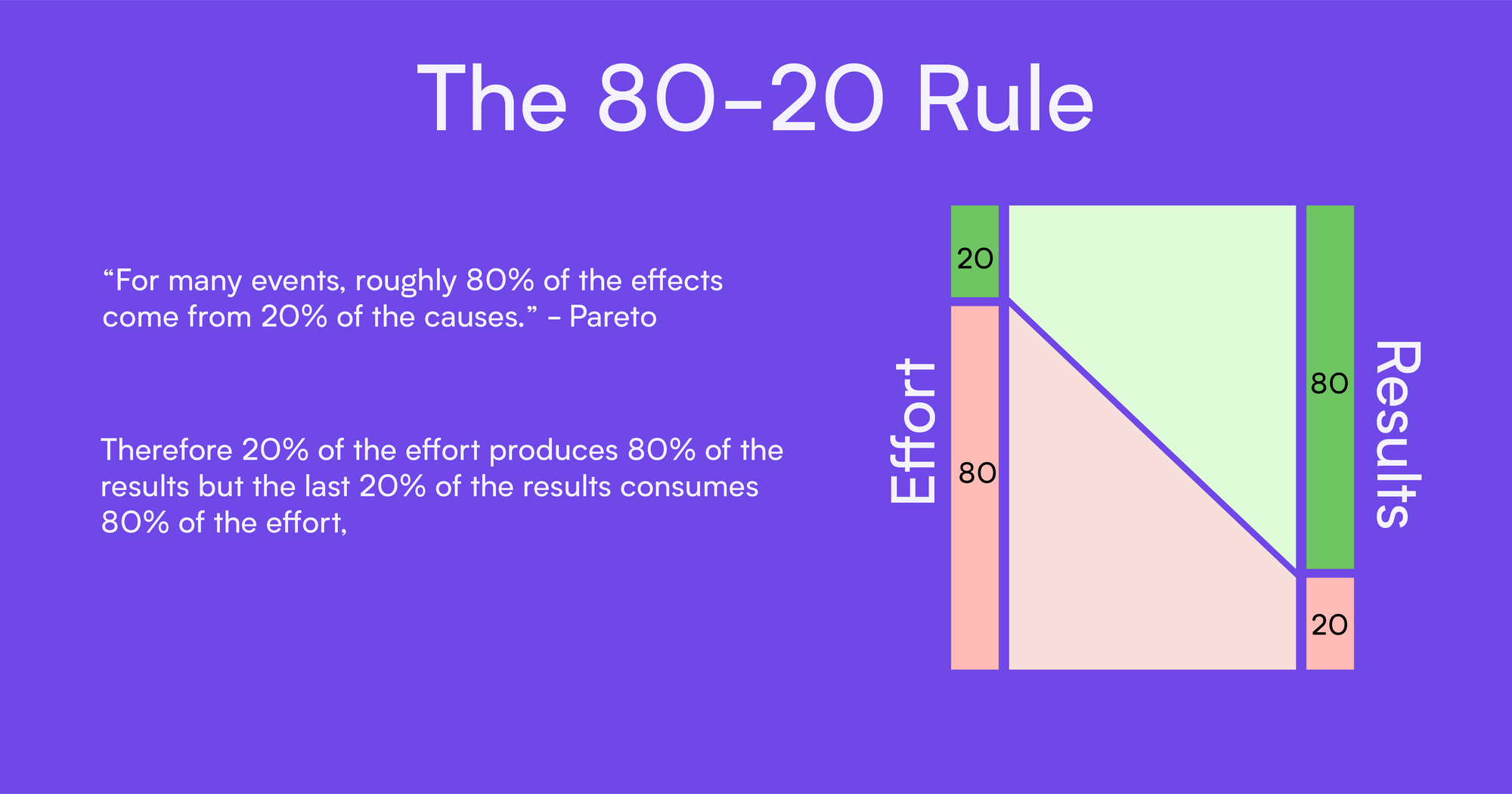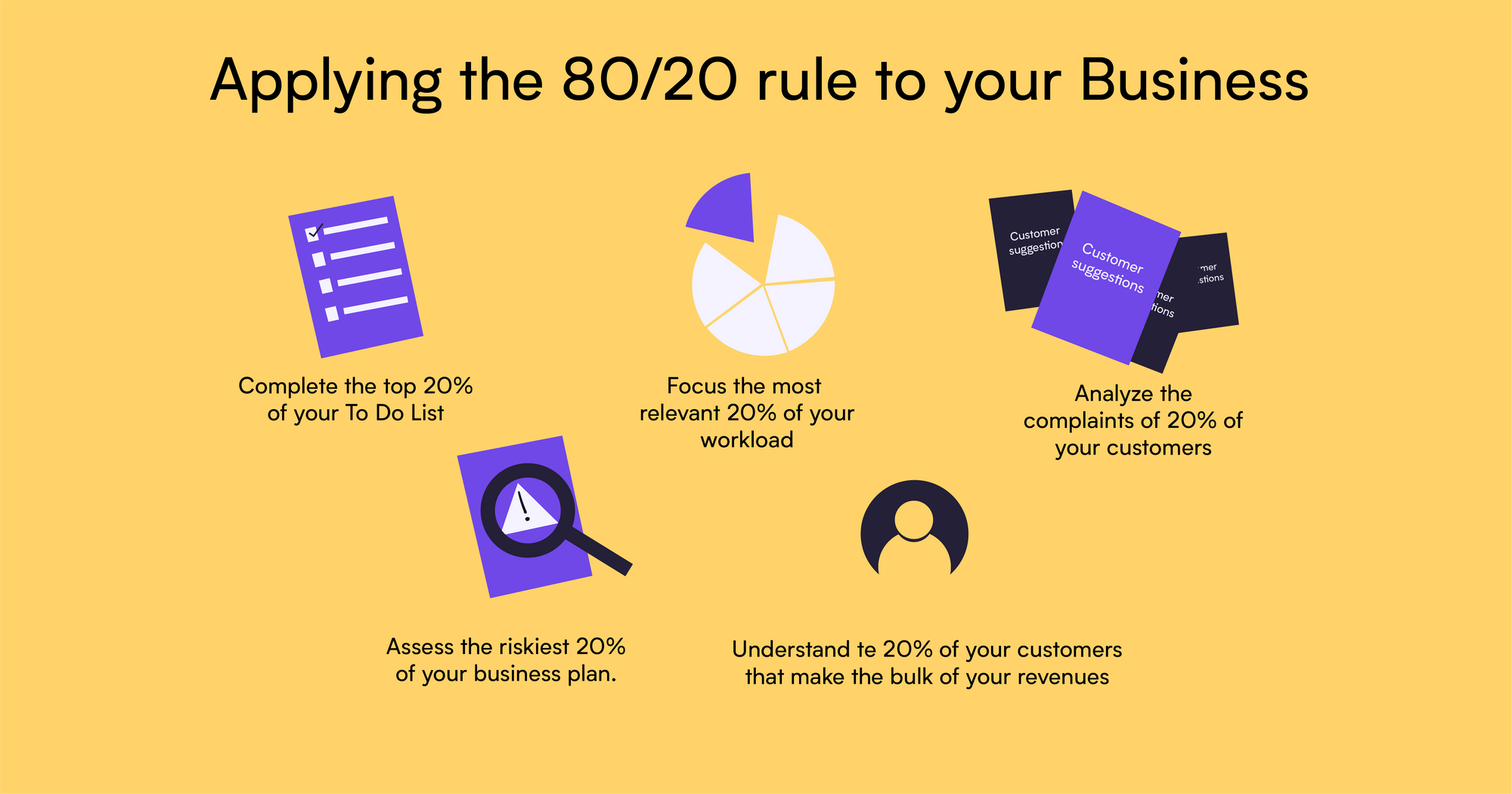Here's how to use The Pareto Principle (80/20 rule) to succeed in your life

Sahil Bloom, an angel investor, recently said something I believe is 100% true.
“Lie: Your friends will always be there for you.
Most of your friends aren’t really your friends. They’re just along for the ride when it’s fun or valuable—they'll disappear when it's not. Your real friends are there when you have nothing to offer in return. Cherish them.”
I have tens of acquaintances but only 2-3 "real" friends. I ensure that I spend most of my time (outside my work, family, and personal time) with these people. I’ve never been this happier.
You might be thinking, what’s the connection between this and the Pareto principle? The Pareto principle (also known as the 80/20 rule) advocates the same.
It states that for many outcomes, roughly 80% of consequences come from 20% of causes.
So, 80% of your deep friendship relations will come from 20% of your friends. 80% of your productivity will come from 20% of your tasks. 80% of your stress comes from 20% of situations. And so on. The key is to identify these 20% causes and work on them to be happy, productive, and successful.
You can apply the 80/20 rule to your relationships, work, health, personal progress, and many other life aspects to achieve your desired success. In this post, I’ll tell how the Pareto principle came to be, its benefits, and how to use it.

History of the Pareto principle
In 1896, Vilfredo Pareto observed that 80% of the pea pod harvest from his garden came from 20% of his pea plants. He also witnessed that 20% of the people owned 80% of the land in Italy. But, Pareto didn’t coin the term “Pareto principle.”
The credit goes to Dr. Joseph Juran, a management consultant. He studied the works of Vilfredo Pareto and applied them in his field. While consulting businesses, he noticed that 20% of their production mistakes caused 80% of their product defects.
So by using this Pareto analysis, he focused on reducing that 20% of production problems to increase production quality. He did succeed. Juran called this strategy the Pareto Principle.
Benefits of using the Pareto principle
a) Identify the actions that will drive maximum success. For example, working on 2-3 crucial tasks will lead to exponential success than doing 7-8 trivial tasks.
b) Increased productivity.
c) Achieve maximum success with the least amount of work.
d) Save time, cost, and energy by not focusing on lesser-impact activities.
e) Stay organized by focusing on higher priority activities.
f) Improve relationships.
How to use The Pareto principle?
The basis of the Pareto principle is that 80% of your success will come from 20% of your actions. It tells you which resources you should prioritize to gain maximum output. Your goal should be to identify those 20% actions and work on them.
3 real-life examples to help you get started:
a) Pareto principle in relationships

80% of the value of your friendship will come from 20% of your friends. For example, you might have 10 casual friends, but probably only 2-3 “dark hour” friends. These friends will support you through tough times and stay with you without any selfish benefit.
You feel comfortable sharing your deepest secrets and vulnerabilities with them. Cherish those friends. Spend more time and deepen your relationship with them.
Similarly, to deepen your relationship with your partner, identify the 20% of the issues that cause 80% of the problems between you two. Communicate them with your partner and propose a solution to get rid of them. Your marriage will become 10X better.
b) Pareto principle in productivity

You can use the 80/20 rule to prioritize higher-impact tasks and get more done in less time. For example, when you’re scheduling your tasks, identify the 2-3 tasks that will 10X your daily productivity.
Block your calendar and prioritize those tasks for the next day. Don’t entertain others’ requests. Learn to say no to your colleagues until you’ve done those tasks. You should even delegate the lower-priority tasks that don’t demand your expertise to get done. After you’ve completed the priority tasks, you can then host a meeting, collaborate with your colleagues, or do whatever is work-related.
c) Pareto principle in business
One example of this is how Joseph Juran helped businesses improve production productivity and increase efficiency. You should, too, identify the 20% of your bottlenecks that restrict your business to achieve maximum efficiency and work on them.

You can also use the 80/20 rule to increase your business revenue. For many businesses, 80% of their revenue comes from 20% of their clients. If this is your case, too, focus on how you can serve that 20% of your clients. Maybe you can provide customized solutions, offer discounts, or do something that makes them your loyal customers. These customers will stick with you, won’t hesitate to pay you more, and ask for more services — ultimately increasing your revenue.
The 80/20 rule can also help you to increase your business productivity and leadership. Identify the top 20% of exceptional employees who contribute 80% of your business productivity. Reward them generously, help them increase their skills through courses and coaches, and incentivize them to lead a team.
Focus on the “vital few” (the dominant 20% causes) and ignore the “trivial many” to succeed
With the Pareto principle, you can center your life toward the vital few that drive maximum success. Once you take care of the 20% causes, you’ll increase your success probability manifold.
But, that doesn’t mean you should ignore the other tasks, however trivial. Either delegate them or schedule them for later. Because if you focus only on the important tasks and ignore the less important ones, you’ll get lost.





